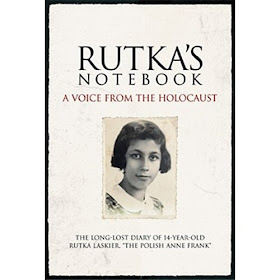
Today is the BIG DAY!! Interview - swaps! I am not sure what was harder the questions or the answers. This was the main reason I signed up for BBAW - I remember seeing these last year and thought how much fun! So without any further blathering from me, let's get started!
 DO YOU KNOW THIS LOVELY LADY ON THE LEFT?SURELY YOU MUST!! HER BLOG IS DELIGHTFULLY WONDERFUL!SHE IS SOPHISTICATED, SHE IS DORKY! Oh wait, I just gave it away! It is my privilege to introduce you to Kim @ Sophisticated Dorkiness!
DO YOU KNOW THIS LOVELY LADY ON THE LEFT?SURELY YOU MUST!! HER BLOG IS DELIGHTFULLY WONDERFUL!SHE IS SOPHISTICATED, SHE IS DORKY! Oh wait, I just gave it away! It is my privilege to introduce you to Kim @ Sophisticated Dorkiness!
1. To get started, tell us a little about yourself. What do you do when you are not reading and blogging?
I live in Madison, Wisconsin, and I just finished my master’s in journalism back in May. I started working at an engineering/manufacturing trade magazine right after that, so I’ve spent most of the summer getting used to work and trying to get outside to enjoy the weather!
When I’m not reading and blogging I like watching tv shows on Netflix (I’m watching Sports Night and Pushing Daisies right now), crocheting, and trying to learn to cook better. Last week I cooked an entire chicken, which I’d never done before.
2. You read such a wide range of books. What is your favorite genre?
Narrative nonfiction is probably my favorite genre. So, that means nonfiction books that use elements of storytelling -- plot, dialogue, characters, etc -- to tell a true story. I think they’re my favorite because I studied journalism and so I read them for the story and technique. It’s fun for me to see how other reporters work or collect information and stories.
3. Tell us about the best book you have read that was totally outside your normal choices.
That’s a tough one! I’ve read more YA because of book blogger recommendations - one I really liked was
Looking for Alaska by John Green.
4. Do you have a favorite place to read?
I love reading outside on a blanket at the park, but I haven’t gotten to do that as much lately. My other favorite place to read is on my couch with a mug of tea – the couch is huge and comfortable with lots of pillows and blankets.
5. What three things do you love (reading doesn’t count, or blogging!)?My family and friends, my cat Hannah, my teddy bear. That’s cheating a little bit, I think, but oh well :-)
6. What would the name of your autobiography be?This is a hard one, since I always think of autobiography as something you write when you’ve lived a life and have some perspective on it. Since I’m on 24, I don’t know if I have any real perspective on myself. But if I were going to write something about myself, at this moment I’d probably call it something like Discombobulated: One Dork’s Attempt at Being a Real Grown Up.
7. Do you have a favorite bookstore?
I’m not sure if I have a favorite, but there are a few bookstores in Madison that I love - A Room of One’s Own Feminist Bookstore, Avol’s Books, and Paul’s Books are three that I try to go to pretty regularly.
8. Are you a cat person or a dog person – or maybe a neither person?I’m definitely a cat person, although before I adopted a kitten earlier this year (Hannah), I might have said neither - my family never had pets when I was growing up. But ever since I got Hannah I’ve been this huge sappy dork whenever I see or read anything about animals. It’s a little ridiculous.
9. What book should I rush out to buy if I don’t already have it?The Spirit Catches You and You Fall Down by Anne Fadiman, because it’s one of the most emotional and well-written narrative nonfiction books I can think of.
10. When people visit your blog, what do you hope they leave with?
I hope they get a sense of me and my personality and that the feel inspired to try a new nonfiction book (or really any book). I feel like there aren’t as many nonfiction reading book bloggers, so anytime I can make nonfiction seem fun or exciting or get someone to try it, I feel excited.
This has been such a wonderful experience for me. I am in awe of Kim - I mean she made the short list for the Best Nonfiction Book Blog! And like Kim, I almost prefer non-fiction, as you can see by my blog. Truth is almost always better than fiction. Kim is a wonderful young blogger and I hope you will rush over to her blog,
Sophisticated Dorkiness where she has her interview of me and some fabulous reviews of great books.




























